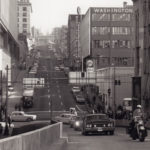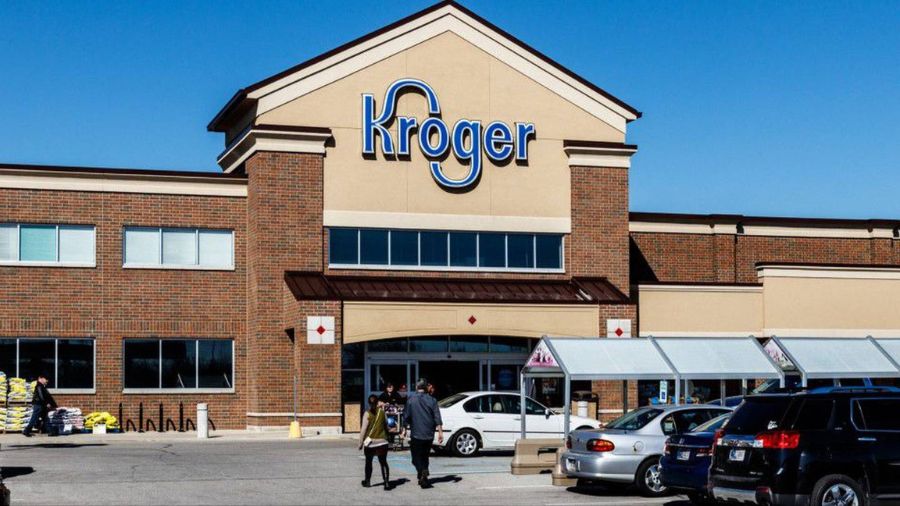Sound familiar? Original Seattle viaduct had no ramps
Jul 25, 2018, 6:14 AM | Updated: Dec 14, 2018, 3:11 pm
There was no party and no cake, but the Battery Street Tunnel celebrated its 64th birthday this week.
When the tunnel was opened to traffic with great fanfare on July 24, 1954, the roadway that carries north and southbound traffic through Seattle on Highway 99 was nearly complete, and not much different than it is today.
With one exception.
Much like the new waterfront tunnel that will open this fall, there were no on-ramps or off-ramps in the central section of downtown, known in those days as the “Central Business District” or CBD.
When plans for the Alaskan Way Viaduct were first shared by City Engineer C.L. Wartelle in the spring of 1947, the elevated roadway and tunnel were touted as a bypass for Highway 99 around the crowded streets of downtown Seattle.
RELATED: Tolls or not, tunnel will push vehicles onto surface streets
In fact, one local visionary – architect Paul Thiry, who would go on to design many local buildings, including what’s now Key Arena – said in November 1947 that a better way to go was to skip building an ugly and view-blocking viaduct. Thiry contended that an elevated structure would only end up becoming a blight and would create a slum along the waterfront.
Thiry said – and this was more than 70 years ago – to put the entire bypass underground in a tunnel. For this reason alone, Thiry deserves to have the new waterfront tunnel named after him for reaching this conclusion so many years before everyone else.
In that long-ago time before the viaduct, there was no Interstate 5 through downtown yet, either.
All north-south traffic bound for Canada or Oregon (or Everett or Tacoma, for that matter) traveled through Seattle on Highway 99, which was routed over surface streets. Through downtown, this meant negotiating the stoplights, pedestrians and general urban congestion of long stretches of 4th Avenue and 6th Avenue, from the Industrial Area to Denny Way.
Early plans
However, an early drawing of the Alaskan Way Viaduct from the Seattle Engineering Department from sometime in the 1950s shows a total of four ramps on the structure through the Central Business District: a southbound on-ramp at Columbia Street; a northbound on-ramp at University Street; a southbound off-ramp at Spring Street; and a northbound off-ramp at Seneca Street.
Any grizzled veteran of Seattle traffic knows that only two of these ramps exist today: the on-ramp at Columbia and the off-ramp to Seneca.
What hardly anybody remembers is that both of these ramps didn’t come until years after the viaduct and tunnel first opened.
The first stretch of viaduct opened on April 4, 1953. When a member of the Seattle City Council a few days later urged completion of the four planned ramps as soon as possible, he was told that the funding priority was for the next phase of the project, which meant waiting to build the ramps until after the Battery Street Tunnel was completed.
Over the next five years, a quick check shows that the subject of completing the viaduct ramps comes up in the Seattle Times archives every now and then, but little or no progress was made on their design or on the land purchases and condemnations necessary to begin construction.
In June 1958, City Engineer Roy W. Morse said that the cost of the ramps had gone up from $600,000 in 1954 to $1 million. Because the costs would be shared by the City of Seattle and the State of Washington, the project required legislative approval from lawmakers in Olympia before it could get underway.
A few days later, a Seattle Times editorial said, “construction of on and off ramps along Alaskan Way Viaduct should be given top priority in city and state planning.” For now, the city had enough money in hand, the editorial said, to “complete all engineering plans and preliminaries so that construction can begin the moment state funds become available.”
But little less than a year later, not much had changed. The Seattle Times again editorialized in April 1959 that “the program for connecting the viaduct with the central business district by approach ramps should be expedited.”
RELATED: Secret room in the Battery Street Tunnel
Everyone knew that there were big plans on the horizon for downtown, including what would become the Seattle World’s Fair of 1962, and need for all that anticipated vehicle traffic to have access to and from the viaduct. The Times said, “All four of the ramps should be ready for use by the time of the Century 21 Exposition” which, at that time, was scheduled to take place in 1961.
Population growth
The first of the four ramps – the northbound off-ramp at Seneca Street – was indeed built in time for the rescheduled 1962 fair. The off-ramp opened in late November 1961 in time for the holiday shopping season, and downtown retailers such as J.C. Penney and Osborn & Ulland promoted and celebrated new access for shoppers by featuring maps of the viaduct in their newspaper ads.
Beyond the work involved to prepare for hosting the World’s Fair, the area in and around Seattle was growing and changing at a rapid post-war pace, and plans were moving forward for Interstate 5 to be built through downtown, with its own set of on and off ramp and other siting issues that would play out for years.
Expanding neighborhoods north and south of the city as well as adjacent burgeoning suburbs, with their housing developments, shopping centers, and other car-based amenities, put pressure on elected officials and civic leaders to plan for downtown’s future as a place for those new suburban dwellers to continue to work, shop and play.
It was in these heady years that big civic initiatives emerged, including the “Forward Thrust” package with transportation, stadium, and other bond measures; and plans to demolish Pike Place Market and rehab Pioneer Square in favor of “urban renewal.” The successes and failures of these efforts, for better or for worse, would shape the city and surrounding communities for decades.
Meanwhile, over on the waterfront, delays in building the second Alaskan Way Viaduct ramp inspired the Seattle Times to, yet again, editorialize and criticize delays that it blamed on the city.
Criticism for the viaduct
In August 1964 the Times wrote, “We wonder how many motorists and other citizens have pondered the odd feature of Seattle’s Alaskan Way Viaduct. It is one of the few major traffic-movement arterials in the nation, we suppose, which has only a single-purpose ramp in its most critical section.”
“You can drive off the Alaskan Way Viaduct at Seneca Street,” the editorial continued, “but you can’t get onto the viaduct from the city’s central area, much to the consternation of motorists who may not know the reasons for the inconvenience of fighting extra blocks of traffic instead of being able to drive directly onto the fast route to the north or south from the city’s center.”
As it turned out, those Times editorial writers – and those consternated motorists – had to be just a little more patient. The Columbia Street on-ramp to southbound Highway 99 on the viaduct opened to traffic – with only minor fanfare and a small motorcade of dignitaries – at the end of January 1966.
It’s unclear when plans for those remaining two ramps were dropped, but the Alaskan Way Viaduct, minus those two mystery ramps, was finally completed nearly 13 years after it first opened to traffic.
And it was just about eight years later, in September 1973, when late Seattle City Councilmember John Miller, citing all the waterfront blight and view-blocking reasons that we’ve come to know and love, made the first formal request to the Engineering Department to consider studying the possibility of tearing it down.



















